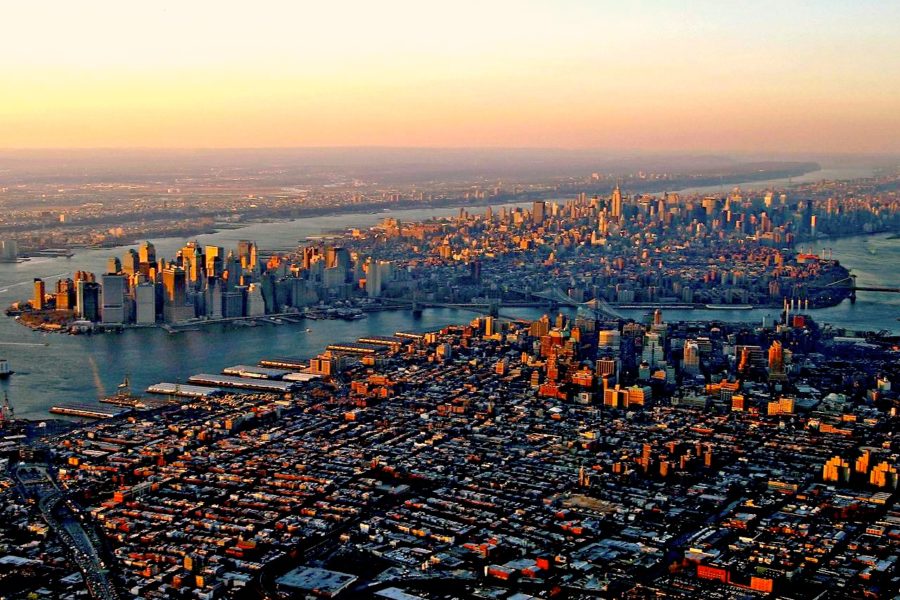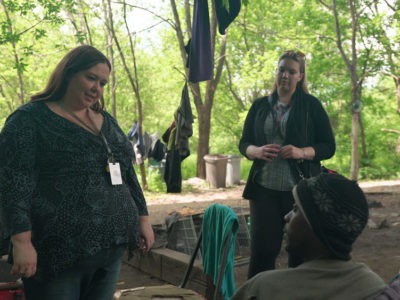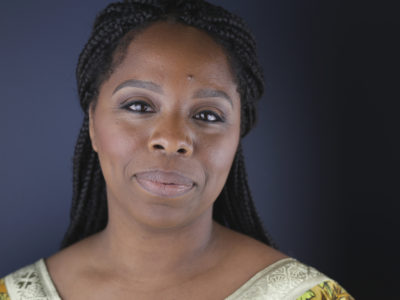The following is the text, as prepared for delivery, of an address by Rosanne Haggerty at New York’s Zoning the City conference on November 15, 2011. The conference celebrated the 50th anniversary of New York City’s zoning code. In her remarks, Haggerty argued for strong investments in the city’s worst-off neighborhoods to improve taxpayer outcomes, increase New York’s global competitiveness, and remain on the right side of history.
Thank you, Amanda [Burden], for the opportunity to be here today to address this important topic. I think in beginning today’s presentations with Dan [Doctoroff]’s remarks on the Competitive City and mine on the Equitable City, there is a recognition that it’s not an either/or choice about what kind of city we wish to be, but that we must be both competitive and equitable, as well as sustainable and aesthetically pleasing. The key question is, to what end do we position New York as a competitive city and invest public resources in wealth creation? The only worthy answer is to create better lives for all who live here.
What is an equitable city anyway, and how do we measure that?
It’s easier to track where we’re falling short.
Over a million of our fellow New Yorkers live in poverty. Many are children. Many are elderly or disabled. Many are working very hard in low paid jobs- doing all the right things but falling further behind.
New York City under Mayor Bloomberg has been engaged and creative in addressing poverty, with initiatives such as the Center for Economic Opportunity, which has introduced evidence-based anti-poverty programs in several areas, including place-based employment programs in public housing and early childhood supports, and the Young Men’s Initiative, announced this past August, that will target job placement, mentoring and other supports to reduce the persistent disparities between young men of color, who now face the bleakest life prospects of any group of New Yorkers, and their peers.
Yet despite these innovations, the gap between the lives led by the most privileged New Yorkers and the residents of New York’s poorest neighborhoods is widening. Strong evidence from multiple studies, many from a public health perspective, point to widening income inequality as the principal and increasingly destructive force undermining the City’s social fabric.
On every scale: employment, housing, health, education, safety, the quality of City services, we seem now to tolerate having winners and losers in place of a social contract that recognizes the moral claims we have on one another as fellow citizens.
There are many reasons that creating a more equitable city should be our common purpose as citizens, but let me highlight three urgent ones:
- First, we are making bad choices that hurt poor New Yorkers and all New York taxpayers.
- Second, we can’t afford to leave a 1.6 million New Yorkers behind in a competitive global economy
- And most of all, it’s the right thing to do.
Here’s an illustration of the bad choices we’re making.
What you’re looking at is an image from Eric Cadora and Laura Kurgan’s “Million Dollar Blocks” project. They traced the addresses of origin of men and women in New York State prisons, and the cost of incarcerating them to New York tax payers. The addresses clustered in the poorest neighborhoods of New York City. Here you see six blocks in Brownsville, Brooklyn. These are multi-million dollar blocks. Quite apart from any discussion on crime and punishment – and let me note that Brownsville remains one of the City’s most dangerous communities -the economics beg the question: can’t we do better? If we’re prepared to spend many millions of dollars responding to the social distress of this and other poor neighborhoods, wouldn’t it make more sense to invest in measures that strengthen not separate families and increase rather than derail these residents’ ability to participate in the economy?
And here’s an observation, compliments of HSBC, that suggests that it may not be a very competitive strategy to leave 1.6 million New Yorkers in poverty, including many of working age who have not been educated or trained to participate New York’s economy.
And finally, while doing the right thing requires no further rationale, economists and sociologists are now weighing in to support the golden rule. All of us, rich and poor alike, are more satisfied with our lives— are happier— the more equal our society, and in this context, the more equitable our city.
So back to the question of what is the Equitable City?
The human development framework based on the work of Nobel laureate Amartya Sen is the global standard for guiding and measuring progress. It identifies the capabilities and freedoms that societies should assist all citizens in realizing:
- The ability and freedom to live to an old age, engage in economic transactions and participate in political associations
- The ability and freedom to transform decisions to valuable action
- The ability and freedom to access resources
- The ability and freedom to make choices
Societies, or cities, can measure progress by the increase in the percentage of citizens who are more capable in these fundamental areas. As a global city, it is an appropriate measure for New York as other growing economic powers are influenced by this way of thinking about the responsibilities of the state in the development of its citizens. Consider that in India, a massive effort is underway involving a staggering level of investment to raise the level of college attendance from 15 to 30 percent of the population by 2020, which in India means increasing the capabilities of an additional 100 million people. Compare that bold moon shot with the way we respond to those sitting on the sidelines of our society and economy.
I think another standard for what makes an Equitable City is valuable as well. Call it the “community I’d like to live in standard”. I thought about the town in Connecticut I grew up in and the features that shaped me, provided opportunities and above all, made me optimistic for the future and eager to improve myself and contribute to the world around me. The community was safe. Everyone I knew had a home that met their needs. Jobs were available. Public schools were good. There were well tended parks and a great library with nice librarians. We knew our neighbors’ names. This isn’t just 1970s nostalgia. All of this is true today of the neighborhood I live in in lower Manhattan as well.
Yet this is not true of the neighborhood I work in, Brownsville, Brooklyn. It’s not true in the neighborhoods of our City where the worst social outcomes are clustered, and where many of the 1.6 million New Yorkers in poverty are living. It doesn’t have to be this way.
Getting the public infrastructure working in these neighborhoods is an entirely achievable goal and would represent a dramatic move toward a more Equitable City. These neighborhoods contain significant numbers of public housing developments, which are these communities’ most significant underutilized assets. Investing in improving the physical infrastructure of the city’s public housing and in the social infrastructure surrounding public housing is our single biggest opportunity for closing the equity gap in our poorest communities. These are also the communities and citizens that most need more housing choices, better skills training and jobs, strong schools, attractive and well managed parks, and active libraries with librarians who know the neighborhood children by name.
Too often investing in poor neighborhoods has meant displacement for poor residents. A new investment framework is needed that is focused on residents as well as their environment. The point is to make more New Yorkers capable of greater participation in the economy and to begin to close the income gap by getting more players on the field.
Even in tough budget times, investing in these communities and their residents makes sense. Given what is spent incarcerating, sheltering, hospitalizing and otherwise attempting to manage the social distress of citizens who have been left behind, a serious, coordinated and sustained investment in these neighborhoods, in public housing and in current residents is an investment in a more competitive city.
These are not novel ideas, but ones that New York could adopt and execute with unparalleled imagination.
The organization CEOs for Cities developed a “City Dividend” project to calculate the benefit to the nation’s 51 largest metro areas of making modest performance improvements in college graduation rates and numbers of households living in poverty. They calculated that a 1% improvement in each area would produce collective new wealth of over $137 billion annually. New York’s share would be very large.
Other cities have profoundly improved their prosperity, reduced crime and transformed their image and international standing by investing boldly in their poorest communities.
In Medellín, Columbia, for example, investments in high quality public plazas, libraries and other public buildings in the center of what had been its worst slums have brought the city out of the shadow of its past as a violent center of drug trade to become an admired leader in effective governance and transformative urban design.
Other cities are discovering the power of investing in well-designed public facilities in their most impoverished communities, and some of these examples are featured in a photography exhibit, “Design with the Other 90%”, now on display at the UN.
A particular area where New York has lagged, yet could lead and become more equitable is in its range of housing options.
Housing is so much more than an asset. For all of us, but particularly those with the most limited resources, having stable housing that is affordable and safe is almost a precondition for being in good health, having children thrive in school, and maintaining the social ties that provide support and information on jobs and other opportunities. New York City does infinitely more to support the development of affordable housing than any other American city, yet stills falls far short of meeting the basic housing needs of many New Yorkers. Those without homes, and those crowding in with family members and those paying over half their income in rent are the clearest casualties of our current housing market, but the narrow range of our housing options puts NY at a competitive disadvantage in attracting and keeping creative workers, teachers, healthcare workers and others on whose talents the City’s future depends.
Last week, a conference sponsored by Citizens’ Housing and Planning Council highlighted both the challenges and possible solutions to creating a more equitable city through opening up aspects of our current housing, building and zoning regulations. This would allow more innovative and cost effective housing arrangements to be created that could use our existing housing and property assets to house more people safely and efficiently and better match the needs of New York households in the 21st century.
Options like a proposed building of mini-studios, designed by Peter Gluck and his team, would make denser use of its site to serve more households, and offer a smaller but more affordable housing unit than is allowed by current regulations.
Making it easier to replicate innovative developments like the Dorothy Friedman Residence, sponsored by the Actors’ Fund, which provides affordable shared housing in suites of up to four roommates; or The Andrews, a reinvention of the old Bowery lodging house, which provides transitional housing in mini-dwelling units, would also help to place a safe and affordable home within the reach of more New Yorkers.
In closing, there are not perfect measures of an equitable city, but we know we can and must do better. There is strong evidence that closing the income inequality gap in our City would be the clearest measure that we’re moving toward greater health, social stability and sustainable economy, and that progress there would have the greatest impact on many outcomes. A fair question is how to go about this. We were reminded by the London riots that social transformation has often not come about through policies pursued by society’s elites but simply emerges. It makes sense to wonder just how long those who have fallen farther behind and deeper into cynicism about our current system will tolerate it, and what will come after the Tea Party and the Occupy movements.
There are warning signs, but it is also in the City’s competitive interests to make significant, visible, measureable steps toward becoming a more equitable City.
We can add value to those left behind who can participate in the economy if we invest in their capabilities and see their progress as essential to our progress as a City. Investments in education and training should replace the vast sums spent on prisons and jails.
We can make it easier for people to find suitable housing that doesn’t overwhelm them cost-wise or undermine their health or employment by taking a fresh look at our current regulations that were crafted for a different time and different population. Creating the housing New York needs to safely and affordably accommodate all its citizens is a great creative project for the City that will add to its competitiveness as well as make New York a more just and equitable place.
And we can make significant, sustained investments in the poorest neighborhoods of our city to make them places that can offer a promising life to those who live there and simultaneously in the capabilities of their current residents. Social network studies tell us that stronger communities will also reduce homelessness, crime and unemployment and health disparities. Focusing on public housing tenants and improving public housing buildings and public housing neighborhoods represents a high impact opportunity for creating a more equitable city starting in the places where the gaps are greatest.
Thank you for the opportunity to participate in today’s session.




